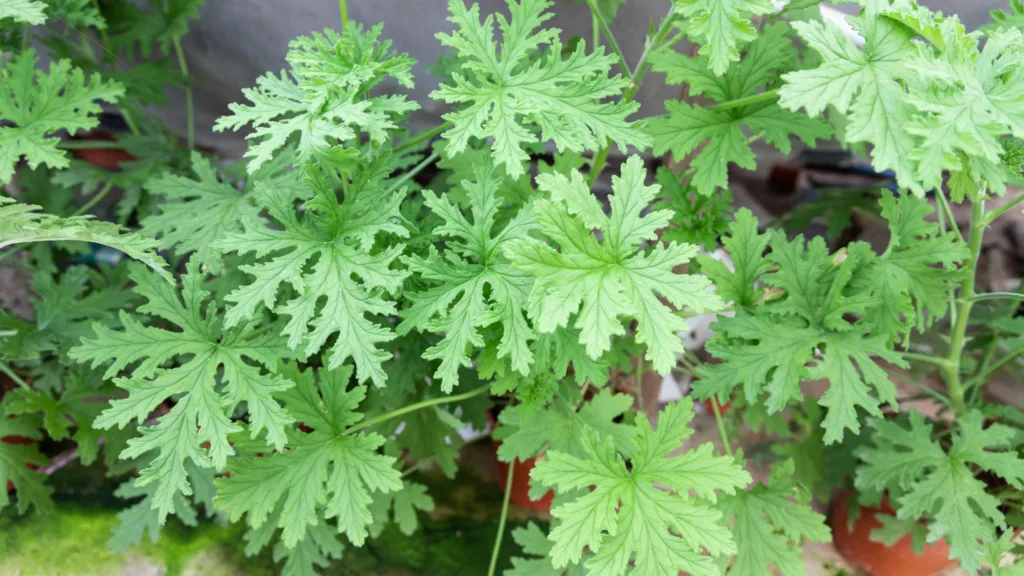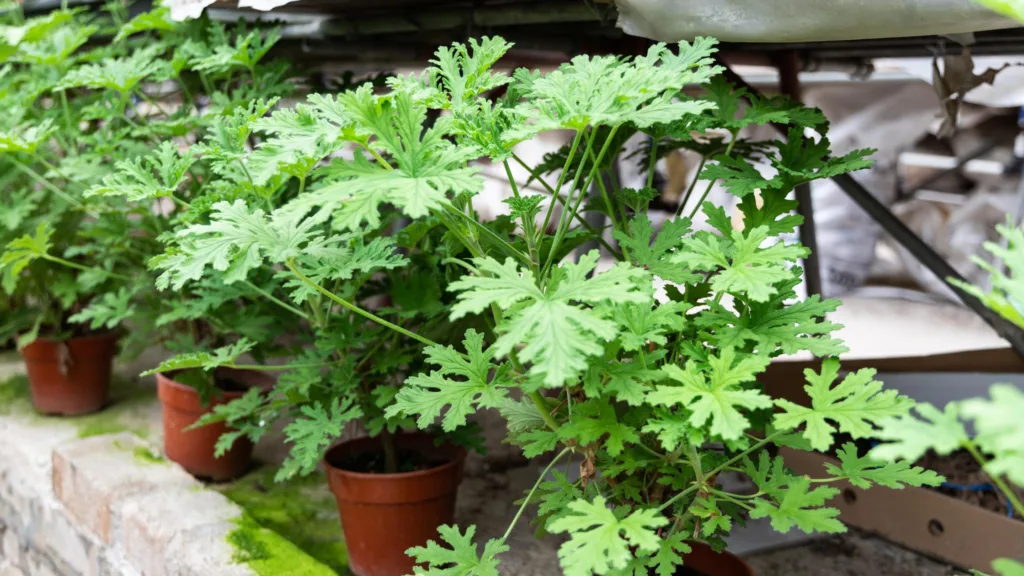Citronella plant
The citronella plant is known for its lemony scent and mosquito-repelling properties. It’s a bushy, leafy plant that thrives in warm climates. You can crush its leaves to release the oils or plant them around your patio to create a natural bug barrier.

Citronella plant seeds
Growing citronella from seed is definitely possible, but it can be a bit slow compared to buying a starter plant. Here’s a simplified rundown:
- Availability: You can find citronella seeds online or at some garden centers. They’re tiny, so they might be mixed with sand in the packet.
- Planting time: Wait for warm soil temperatures (usually after the danger of frost has passed) before planting outdoors.
- Seeding: Moisten a pot with well-draining soil. Scatter the seeds on top and gently press them into the soil. Do not bury them; they need sunshine to germinate. Keep the soil wet but not saturated.
- Germination care: Keep the soil moist but not soggy. It can take several weeks for seeds to sprout.
- Thinning: Once seedlings have a few leaves, thin them out to leave only a few plants per pot.
- Grow: Citronella prefers full sun to partial shade and moist, well-drained soil.
Citronella plant care
The Citronella plant, also known as the Mosquito plant, is a perennial clumping grass originating from Asia. Its unique citrusy scent is often used in candles and insect repellents. Here are some key points about Citronella plant care:
- Growing Conditions:
- Sunlight: Thrives in full sun.
- Soil: Well-drained soil is essential.
- Indoor Option: Can be grown indoors with proper care.
- Maintenance:
- Watering: Make sure the soil is continuously damp but not soggy.
- Nutrients: Balance nutrients for healthy growth.
- Pruning: Regular pruning maintains shape and promotes growth.
- Repotting:
- Repot every 2-3 years or when roots outgrow the pot.
- Select a pot that is slightly larger and has drainage holes.
- Use fresh potting mix for improved health and growth.

Citronella plant benefits
The Citronella plant, also known as the Mosquito plant, offers several benefits. Let’s explore them:
- Improved Plant Health:
- Repotting your Citronella plant provides fresh soil rich in nutrients. This promotes healthier, more vibrant growth.
- Prevents Root Bound:
- Over time, a plant’s roots can fill up the pot, leaving no room for expansion. Repotting ensures your Citronella plant has enough space to spread its roots and thrive.
Citronella plant indoor
Growing a Citronella plant indoors is possible, and it adds a refreshing lemony fragrance to your living space. Here are some care tips for your indoor Citronella plant:
- Light: Place your Citronella plant near a south-facing window to ensure it receives at least 6 hours of direct sunlight each day. Adequate light enhances healthy growth and vibrant foliage.
- Temperature: Maintain indoor temperatures between 60-70°F (15-21°C). Citronella plants don’t tolerate frost well, so avoid exposing them to cold drafts.
- Watering: Make sure the soil is continuously damp but not soggy. Water less frequently during winter months.
Citronella plant propagation
Propagating a Citronella plant is straightforward, and you have a few options:
- Stem Cuttings:
- Take a healthy stem cutting (about 3-4 inches long) from an existing plant.
- Remove lower leaves, leaving only two or three sets of leaves.
- Dip the cut end in rooting hormone powder or gel.
- Plant the cutting in well-draining potting soil, ensuring only the top leaves are above ground level.
- Water it well and place the pot in a warm spot out of direct sunlight.
- Over the next few weeks, watch for new growth to appear.
- Seeds:
- Sow Citronella seeds at room temperature or cover them with fleece to maintain warmth until germination (usually around two weeks).
- Once germinated, transplant the seedlings into well-draining soil.
- Division:
- Divide established clumps of plantlets whenever you need more Citronella plants for your garden.
Citronella plant flowers
The Citronella plant, also known as the Mosquito plant, is a fragrant annual (and in warm climates, perennial) form of scented geranium (Pelargonium citrosum or citrus geranium). Its citrus-scented, scalloped foliage is accented by white, purple, or pink flowers during the summer through fall. While the claims that Citronella plants repel mosquitoes and other insects are not proven, they are still worth growing for their pretty leaves and occasional blooms. Remember that Citronella plants are toxic to humans and pets.



I’m still learning from you, but I’m trying to reach my goals. I definitely love reading all that is posted on your site.Keep the tips coming. I enjoyed it!
I really appreciate this post. I?¦ve been looking all over for this! Thank goodness I found it on Bing. You’ve made my day! Thx again